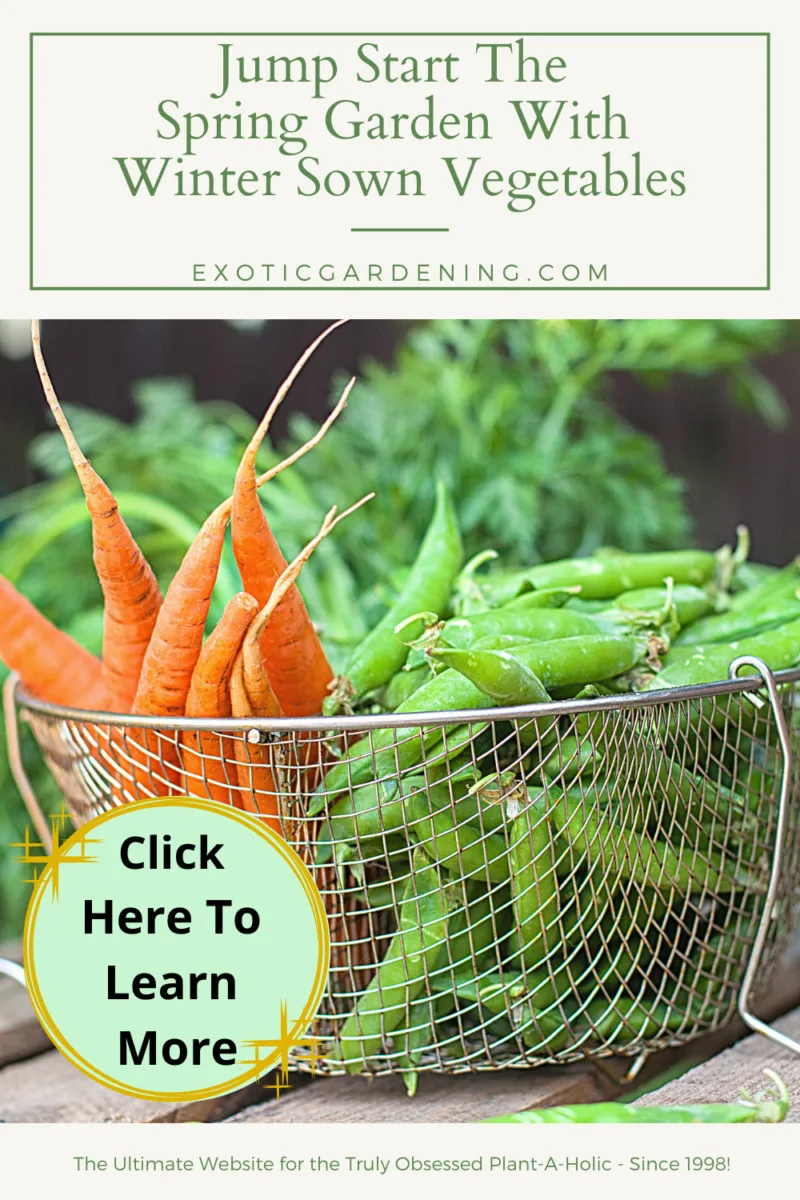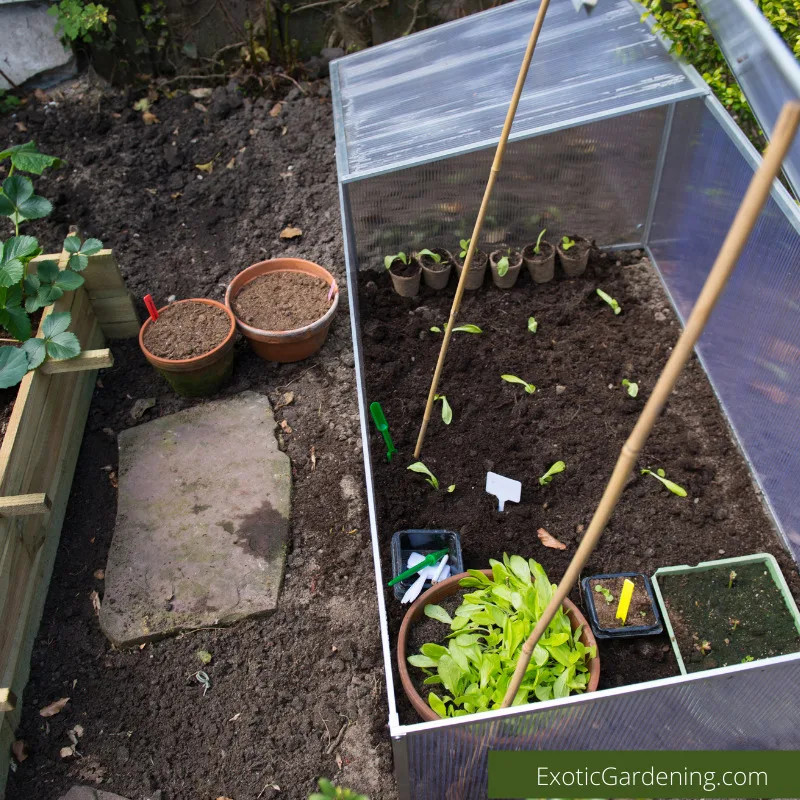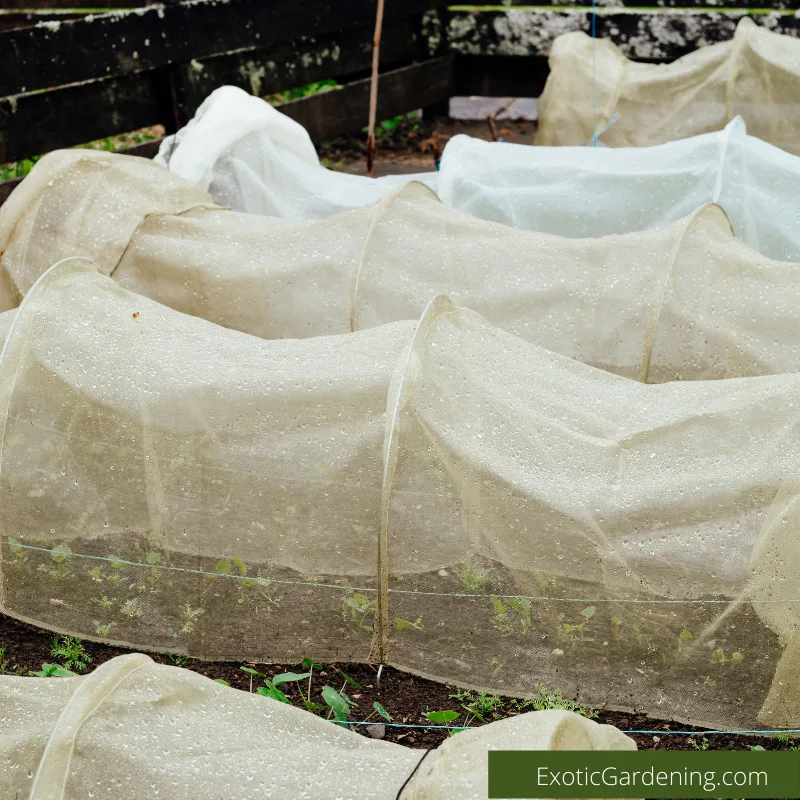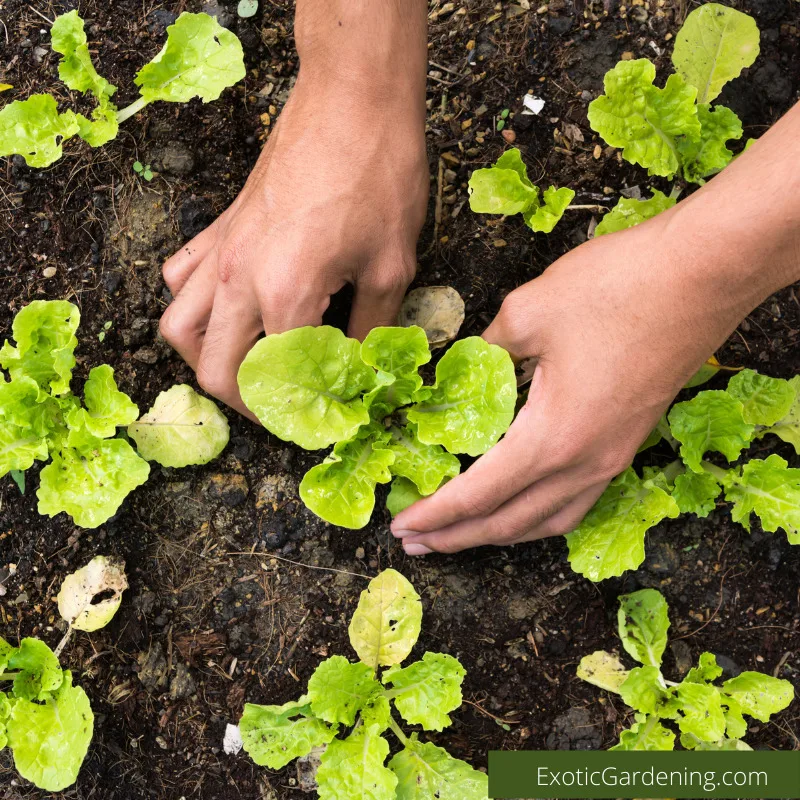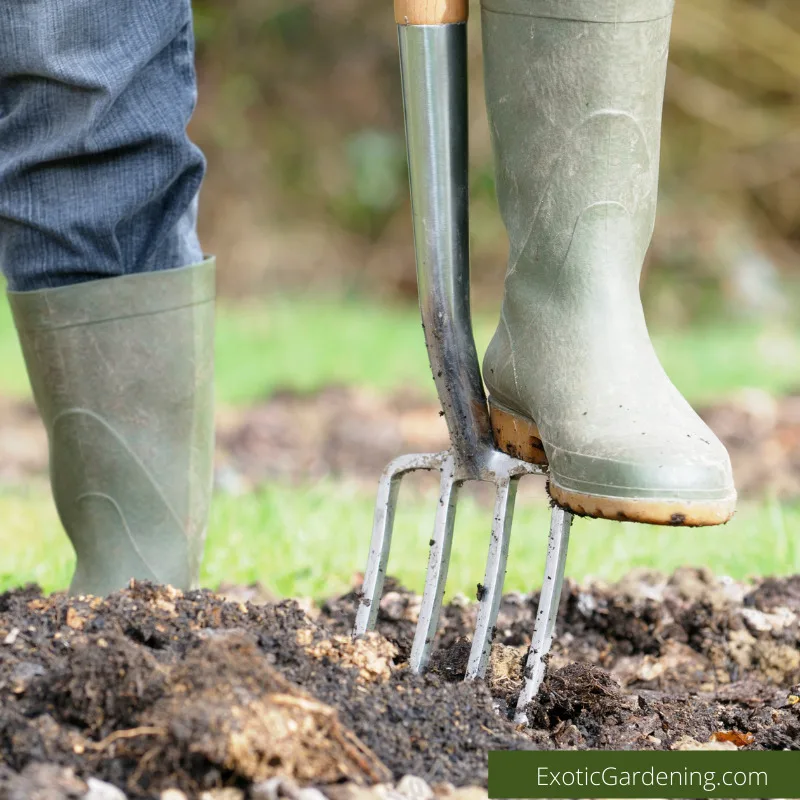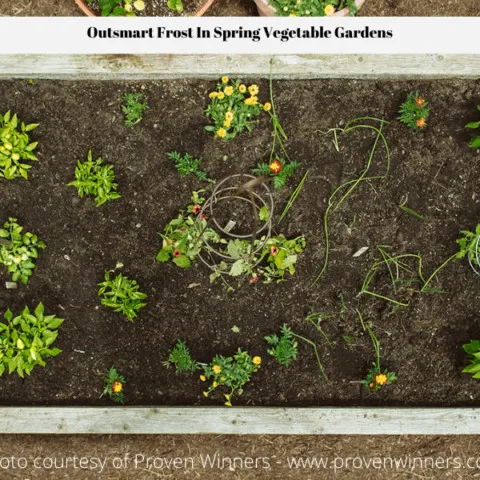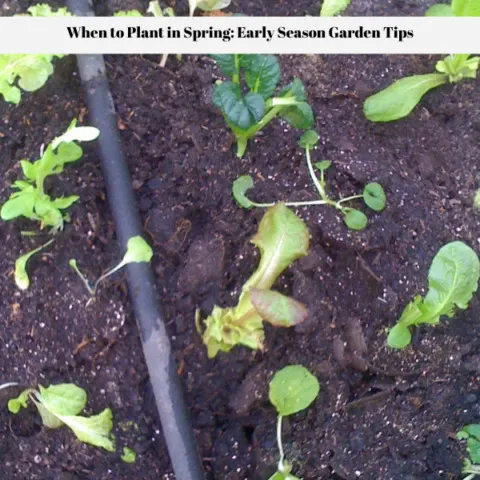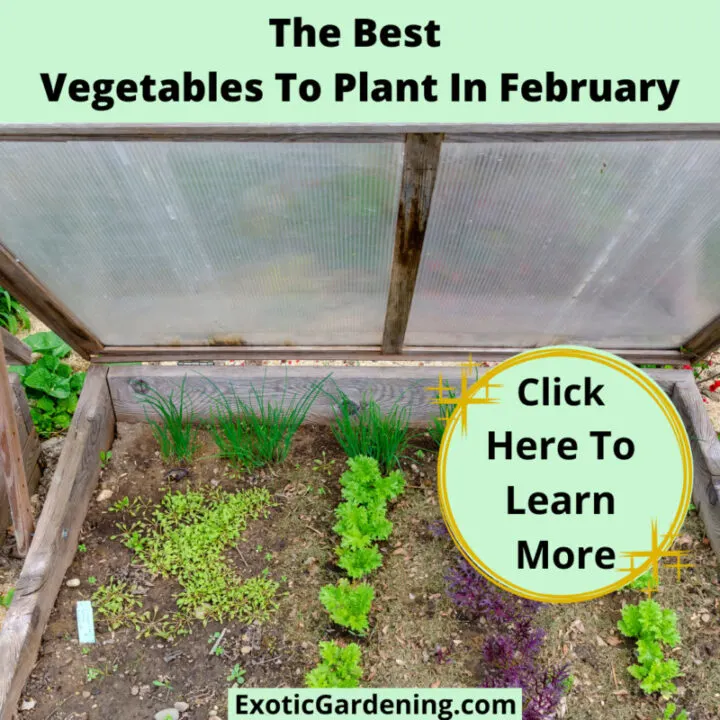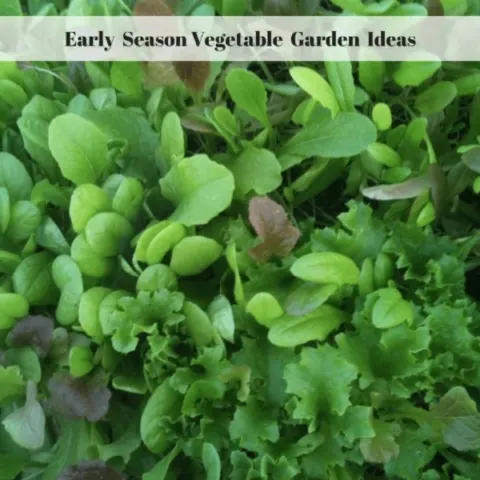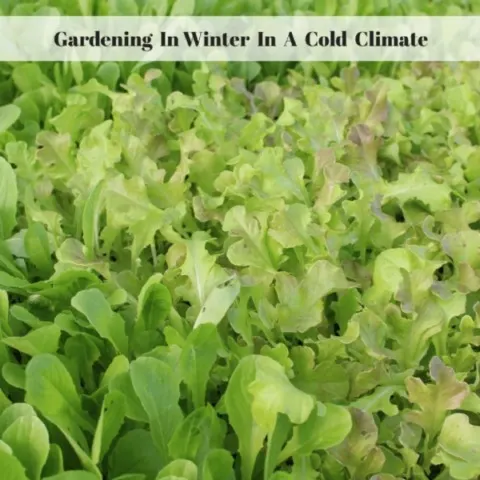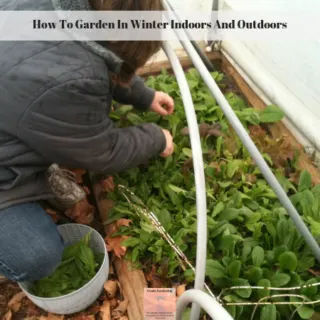Winter sown vegetables not only let you get a head start on the spring garden, but they also are tender and taste sweeter than vegetables grown during the typical garden season.
This is because cooler weather tends to bring out the sweetness in many vegetables such as carrots.
Lettuce grown during the cool months melts in your mouth and has none of the toughness or bitterness of lettuce grown later in the season when temperatures begin to rise.
Best Winter Sown Vegetables For Your Garden
The best winter sown vegetables for your garden can vary slightly depending on where you live.
Here in Indiana, USDA Hardiness Zone 5/6 there are a number of winter sown vegetables that do very well.
Almost any crop that works well for an early spring garden is ok to winter sow, but some of my favorite seeds to start sowing in January outdoors are peas, lettuce, spinach and carrots.
To keep the birds or other wild animals from running off with my seeds I either use a cold frame or at the very least, tomato cages with frost cover draped over them and held down on the ground with rocks or other solid objects.
While these seeds sometimes come up slightly later than ones sown at the “ideal time” in the spring if you are not using a cold frame, the plants are hardier so a late spring frost or even cold weather doesn’t bother them.
Winter Sown Vegetables Are Perfect For Your Garden
Winter sown vegetables are perfect for your garden because you can plant them during a time of year when not much else is happening.
Spring is always such a flurry of activity that many people find it hard to get everything accomplished on time.
Cool weather crops sown too late in the spring season tend to turn bitter and bolt which means you lose out on harvesting your crop.
Another reason I feel winter sown vegetables are the perfect solution is because they will grow and be harvestable even when the weather turns cold and wet which would prevent you from being able to plant on time.
Winter Sown Vegetables You Can Grow In Your Garden
The list of winter sown vegetables you can grow in your garden really is quite long.
Some seeds do best if they are started indoors unless you are using the winter sowing method, a cold frame or unheated greenhouse.
Here are just a few ideas of crops you can winter sow.
- salad mixes – lettuce, etc.
- carrots
- spinach
- radishes
- scallions
- watercress
- beets
- potatoes (I actually plant mine from the end of November to the end of December.)
- turnips
- peas
- leeks
- onions
- parsley
What To Plant In January
Snow is typically still on the ground in January, frost is in the air and it is downright cold in most parts of the country; however do not let the weather deter you.
Gardeners in USDA zone 5 and higher can get a head start on planting seed in spring right now.
Seeds to plant in January include carrots, peas and spinach but be sure to cover these in some way or the wild critters will take off with the seeds.
Indoors – or using winter sowing methods – start seeds of cabbage, celery, onions and parsley.
By the end of January begin moving the young seedlings started indoors out into the cold frame on warm days so they can begin to harden off.
Keep Planting Come February
Spring is still several weeks off when February arrives, but you can still grow a few vegetables outdoors.
This month there is not a lot to do in the cold frame other than water and care for sprouting seedlings.
By the end of February however the work in the cold frame will increase.
The onions, cabbage, celery and parsley that were started last month hopefully have been hardened off by the end of February.
These plants should be planted in their permanent home inside the cold frame along with pre-sprouted potatoes if you did not plant them earlier in the year.
Be sure to vent the cold frame on warm days so your plants do not get too hot.
March In The Garden
Early March is the ideal time to plant seeds of spring vegetables such as spinach, beets, endives, Swiss chard, carrots, lettuce, peas, radish, kohl rabi and green onions.
These are best direct seeded into the garden under cover.
Do not worry if these seeds do not sprout immediately.
Keep them watered and when the time is right, they will begin to grow.
Towards the end of the month, direct seed early corn and bush beans under cover.
Gardeners who started broccoli, cauliflower, tomatoes, peppers, cantaloupe, eggplant, squash and watermelon indoors can plant hardened off plants outdoors under cover by the end of March.
While this may seem a little extreme given the fact that snow, frost and cold temperatures are still around, give it a try.
I typically plant eight week old tomato plants in the garden in mid-March.
I cover them with a layer of frost cover topped with a layer of 6 mil. plastic – the key is to make sure none of the fabric touches the plants.
Those tomato cages are ideal for layering the frost frost cover and plastic.
Be sure to secure the bottom of the plastic to the ground using rocks, bricks or 2 x 4’s just laid on top of the plastic so the wind cannot pick it up and the cold weather cannot get inside the plastic cover.
Do not use up all the seeds or plant every plant that was started.
Instead choose cold hardy varieties and begin by planting a couple of plants.
In the event the plants do not thrive, there will be some left for back-up planting later in the season.
Gardeners who are successful can use the additional plants and seed in spring when they can be grown outdoors without the use of cold frames or frost cover.
How To Prepare The Ground For Winter Sown Vegetables
Prepare the soil as normal using whatever soil preparation methods you prefer – tilling, laying plastic to kill the weeds, etc.
Lay down black – or in the case of tomatoes, I use red – plastic to help warm the soil.
The ideal temperature for warm weather crops is 60 degrees Fahrenheit.
Anytime I have used black plastic, I have removed it once the weather begins to warm up so the roots of my plants do not overheat and so my soil does not sour.
I do leave the red plastic in place during the growing season but cut large holes in the plastic around the base of my plants so I can add compost as needed.
Adding three inches of compost helps warm the soil in late winter or early spring and helps keep the soil cooler during the hot summer months.
Mulch is another option if you do not have compost, but know what is in your mulch because some of it contains chemicals and dyes you don’t want in your vegetable garden.
Planting And Caring For Winter Sown Vegetables Can Be Easy And Rewarding
Growing winter sown vegetables is easy because the crops start growing before the weeds take hold meaning the crops can help choke some of the weeds out.
Of course, there will still be a need to weed, but larger plants can hold their own against weeds better than a seedling can.
It is certainly rewarding to harvest your own vegetables while others are going to the store to buy there’s.
Nothing says success like having the first ripe tomato in the neighborhood!
The Backside Of The Gardening Calendar
Use Frost To Your Advantage
Did you know that there is a way to use frost to your advantage in the garden in both spring and fall? Read on to learn more.
Outsmart Frost in Spring Vegetable Gardens
Understanding how to outsmart frost in spring vegetable gardens leads to earlier harvests, less plant damage and a longer growing season.
When to Plant in Spring: Early Season Garden Tips
Know when to plant in spring by using these early garden season tips. These tips will allow you to get a head start on your vegetable garden.
Jump Start The Spring Garden With Winter Sown Vegetables
Get a jump start on the spring garden with winter sown vegetables. Once you know how to do this, its easy to grow vegetables year round.
Vegetable Garden Frost Protection: Extending Your Winter Gardening Season
Discover essential tips and techniques for vegetable garden frost protection. Extend your winter gardening season with our guide.
Gardening In Cold Climates In Early January
Gardening in cold climates in January without supplemental heat is possible. The seeds, plants and garden structure is what matters.
Vegetables to Plant in January: Garden Tips for Year-Round Growing
There are a number of vegetables to plant in January as well as some flowering plants. Indoors or out, find out dates to start in Indiana.
The Best Vegetables To Plant In February
There are a number of cool season vegetables to plant in February directly in the garden even if you live in a cold climate.
Embracing The Beauty of Winter: A Guide To Winter Flowering Plants
Elevate your garden with winter flowering plants. Explore cold-hardy varieties, garden prep, and nurturing tips.
How To Garden In Winter Indoors And Outdoors
Learn how to garden in winter indoors and outdoors. There are many vegetables and herbs that don't mind the cold or thrive in containers.
Save Money! Harvest Free Vegetables Year-Round In Any Climate!
Yes, you can harvest vegetables year-round, even if you live in a cold climate by planting at the right time and gardening under cover.
September Is Here But Don't Quit Gardening Now!
September is here but there is no need to quit gardening. Plant those cool weather crops from seed or transfer plants into the garden.
Monkshood Flowers For The Fall
There are some late blooming flowers for the fall season such as monkshood. Autumn monkshood is known to bloom from September to November!


